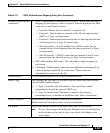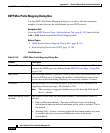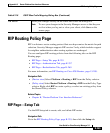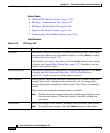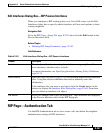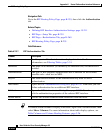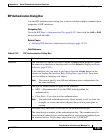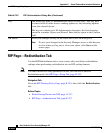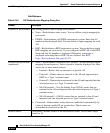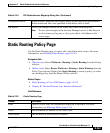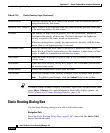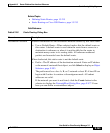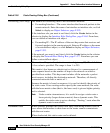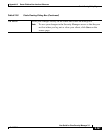
Appendix K Router Platform User Interface Reference
Static Routing Policy Page
K-266
User Guide for Cisco Security Manager 3.2
OL-16066-01
Forwarding (Next Hop) The method of forwarding data to the destination network:
• Forwarding Interface—The router interface that forwards packets to the
remote network. Enter the name of an interface or interface role, or click
Select to display an Object Selectors, page F-593.
If the interface role you want is not listed, click the Create button in the
selector to display the Interface Role Dialog Box, page F-464. From here,
you can define an interface role object.
• Forwarding IP—The IP address of the next hop router that receives and
forwards packets to the remote network. Enter an IP address or the name
of a network/host object, or click Select to display an Object Selectors,
page F-593.
If the network you want is not listed, click the Create button in the selector
to display the Network/Host Dialog Box, page F-477. From here you can
define a network/host object.
Distance Metric The number of hops to the destination network (gateway IP). The default is
1 if no value is specified. The range is from 1 to 255.
This metric (also known as administrative distance) is a measurement of
route expense based on the number of hops to the network on which a
specified host resides. This hop count includes all the networks a packet
must traverse, including the destination network. Therefore, all directly
connected networks have a metric of 1.
Because the metric is based on expense, it is used to identify the priority of
the static route. If two routing entries specify the same network, the route
with the lower metric value (that is, the lower cost) is given a higher priority
and is selected.
Note Under certain circumstances, it is useful to assign a static route a
lower priority (larger distance metric) than a dynamic route. This
enables the static route to act as a backup, “floating,” route when the
dynamic route is unavailable.
Permanent route When selected, prevents this static route entry from being deleted, even in
cases where the interface is shut down or the router cannot communicate
with the next router.
When deselected, this static route can be deleted.
Table K-126 Static Routing Dialog Box (Continued)



